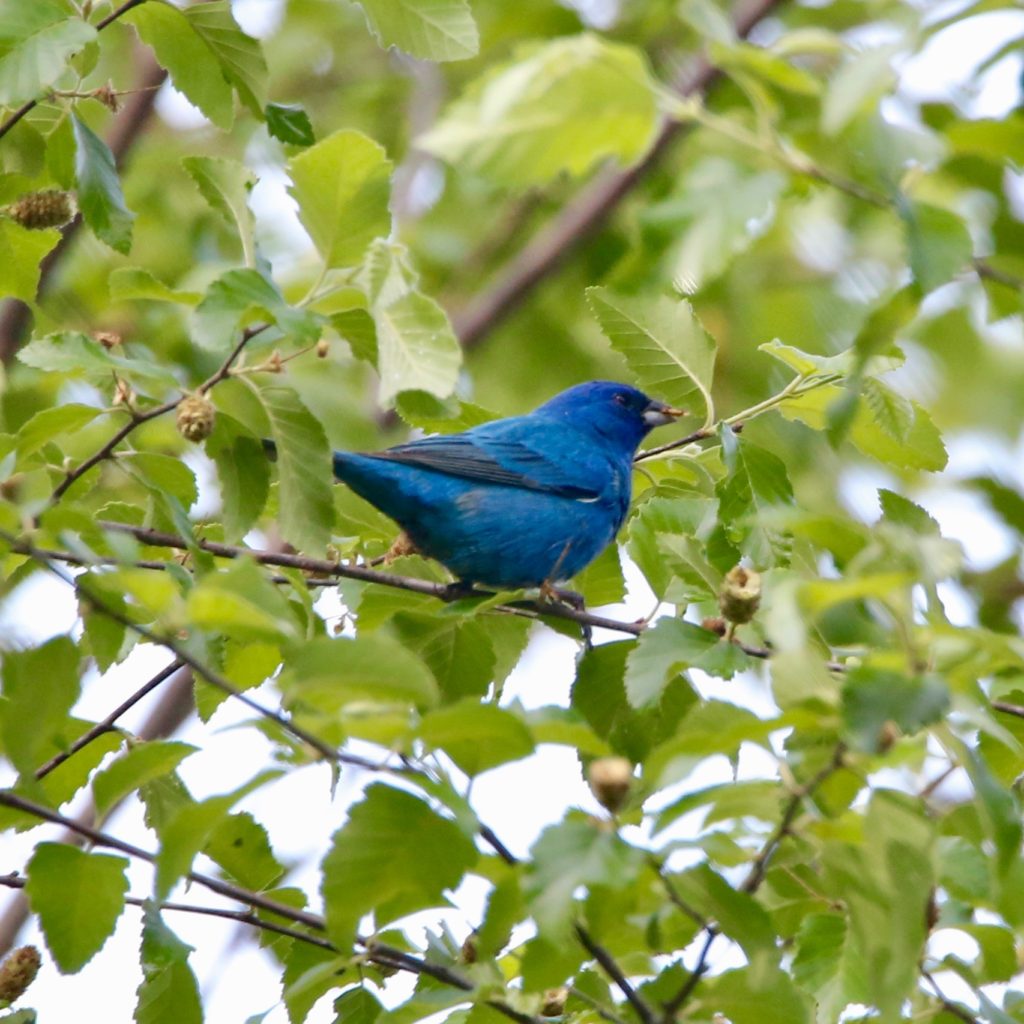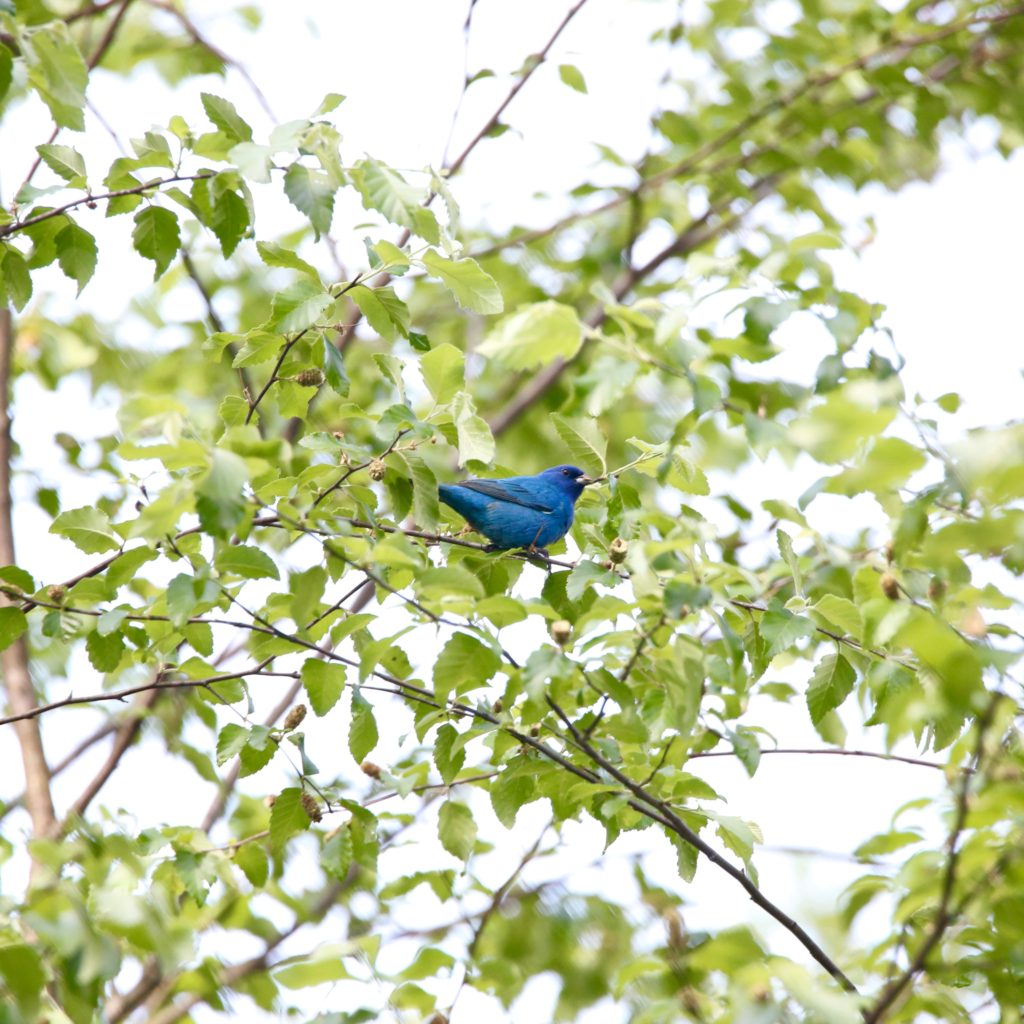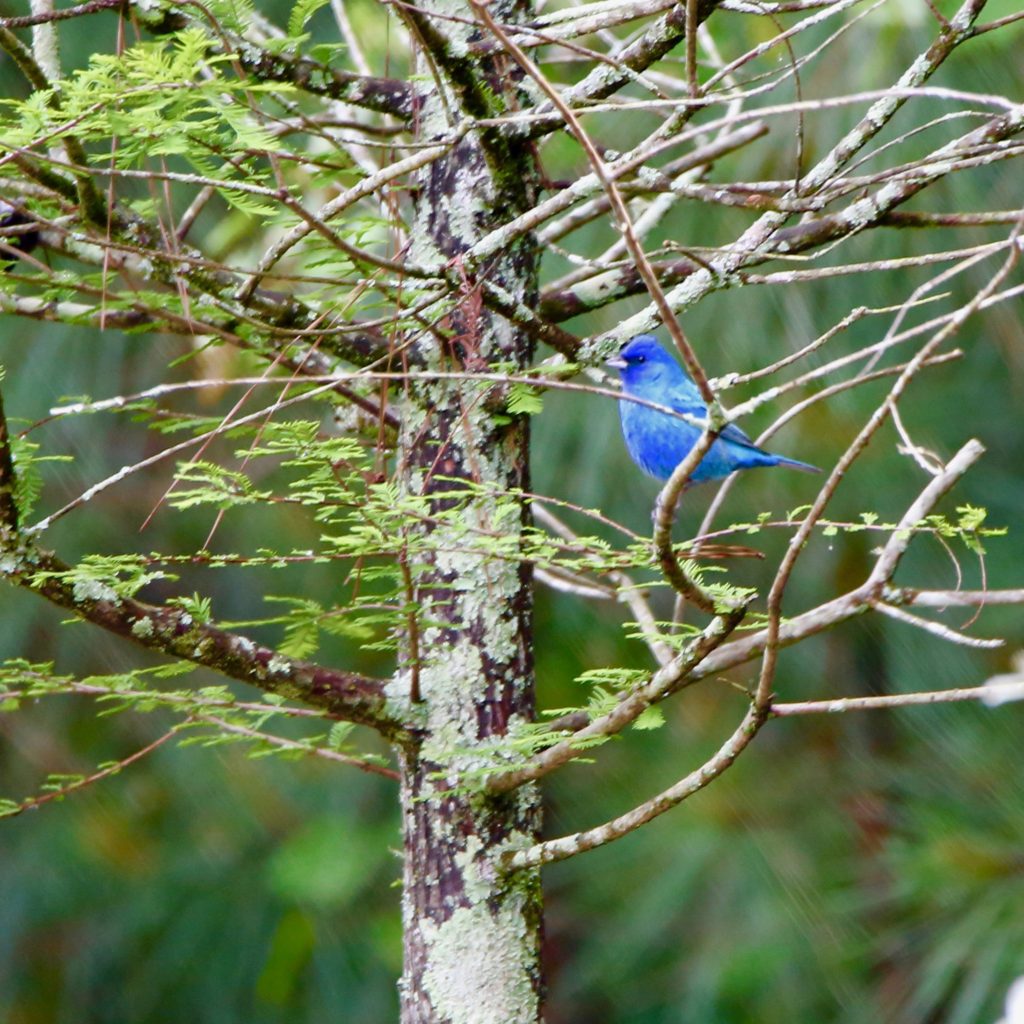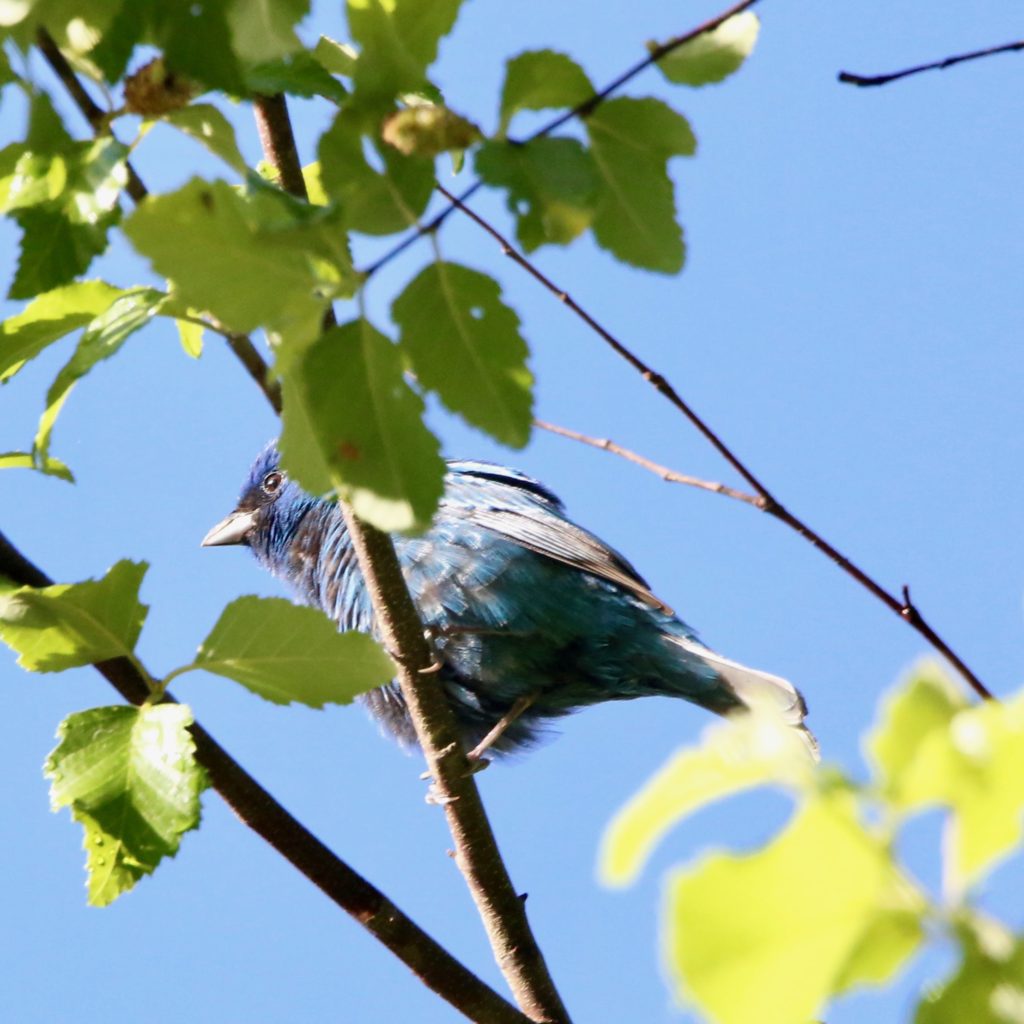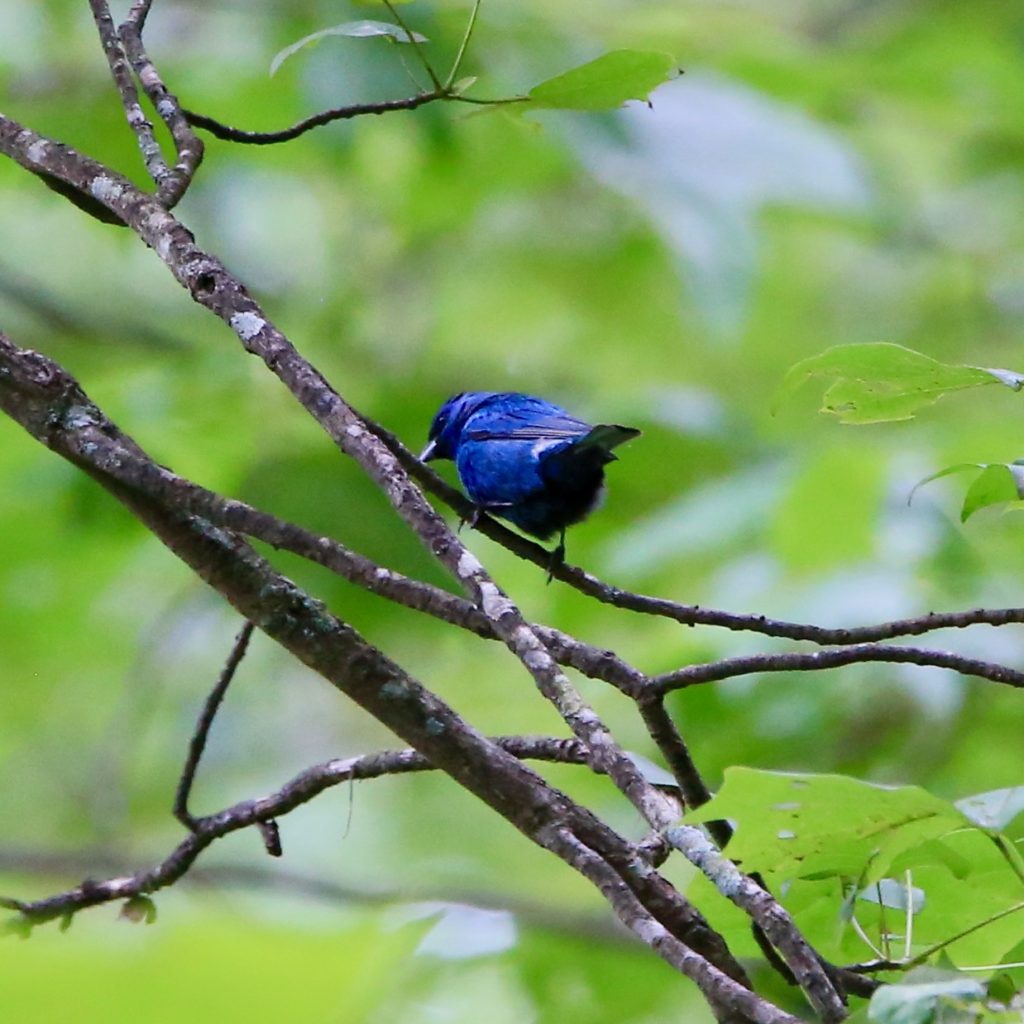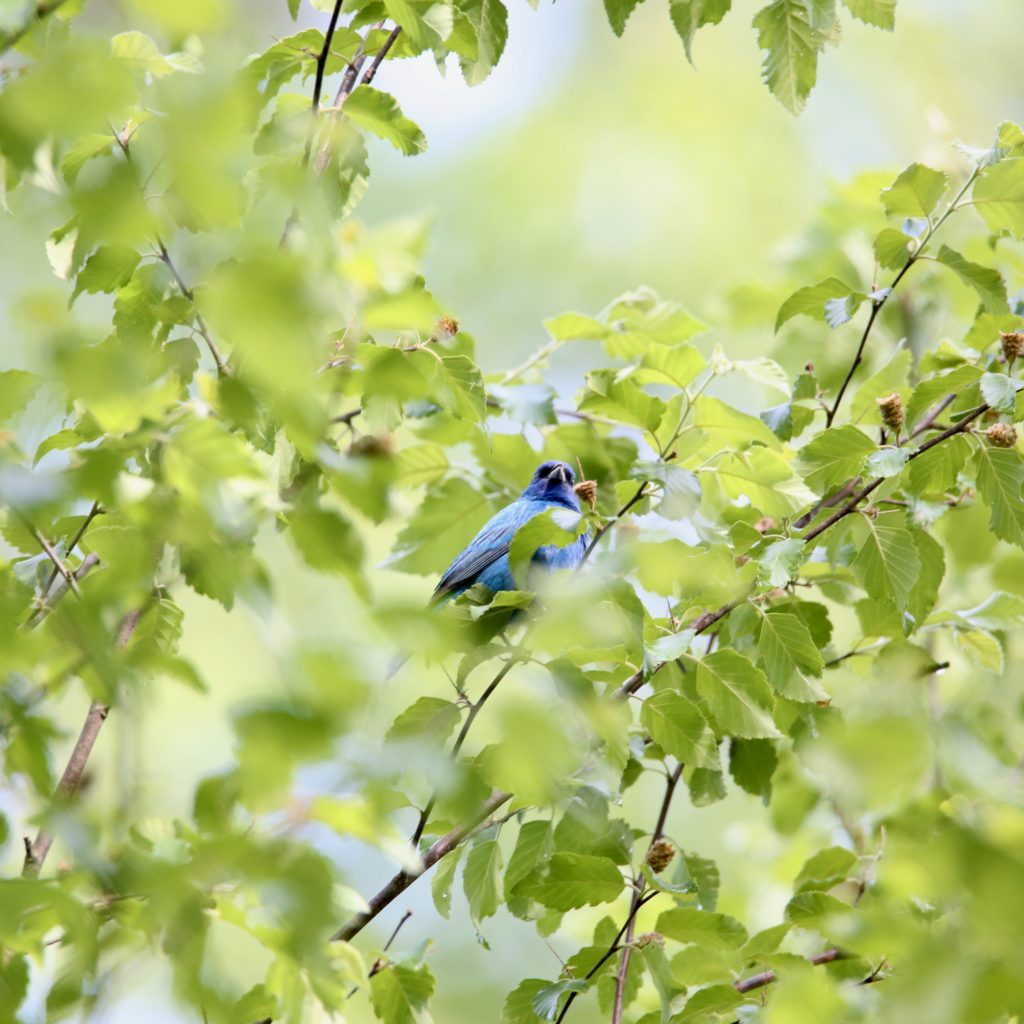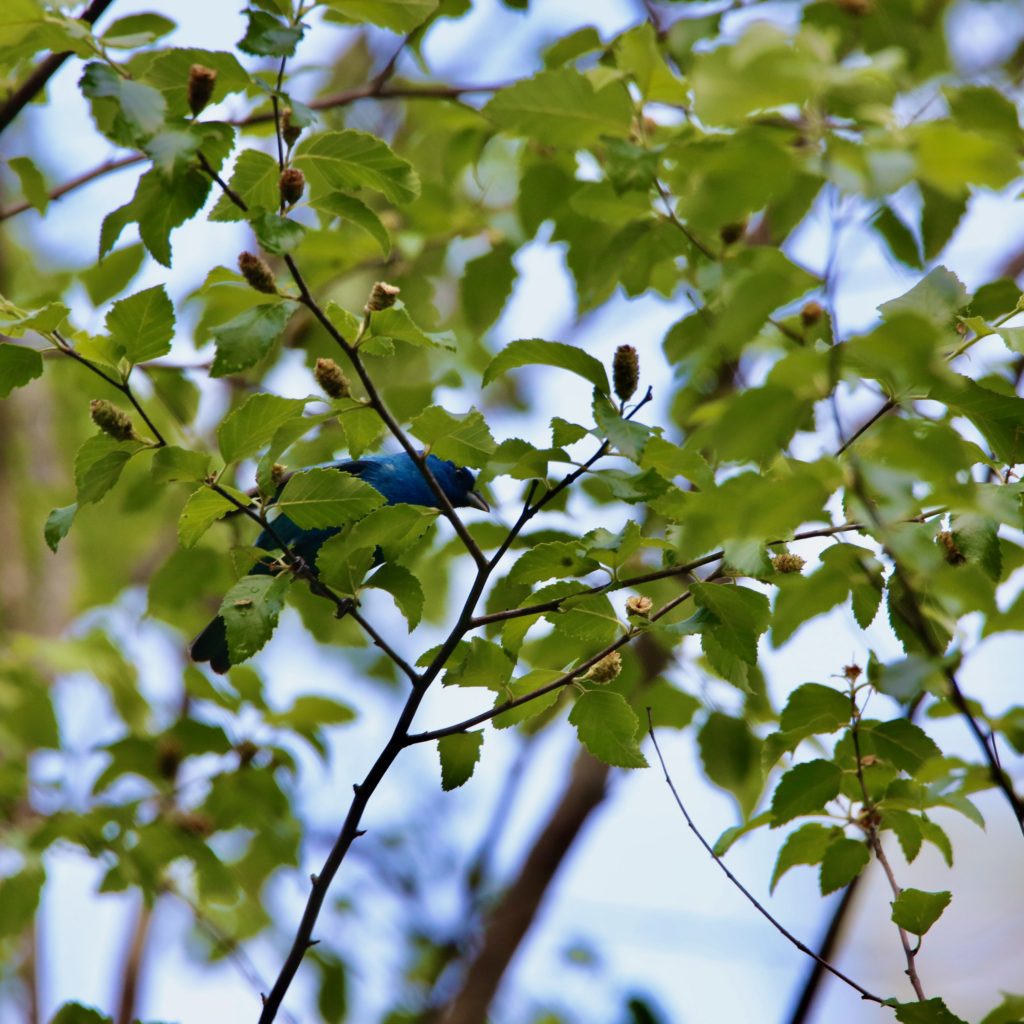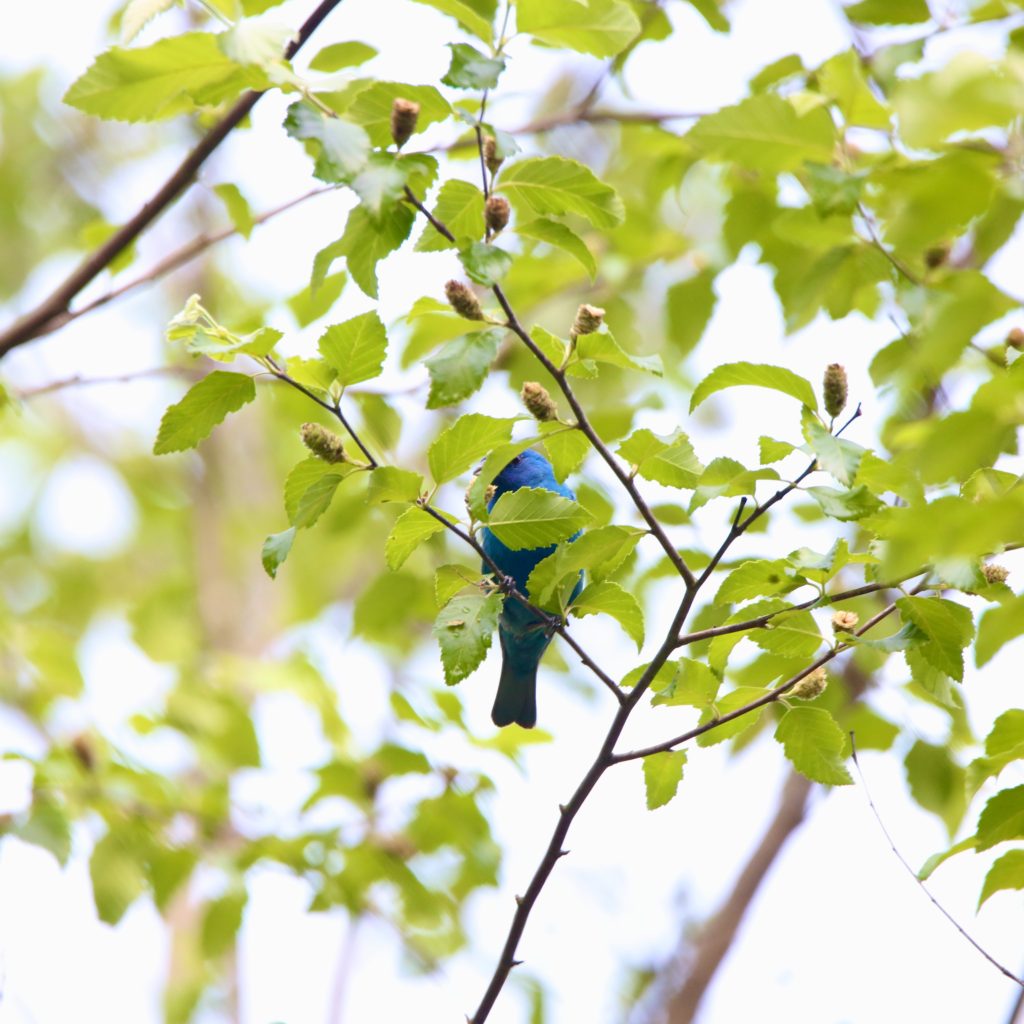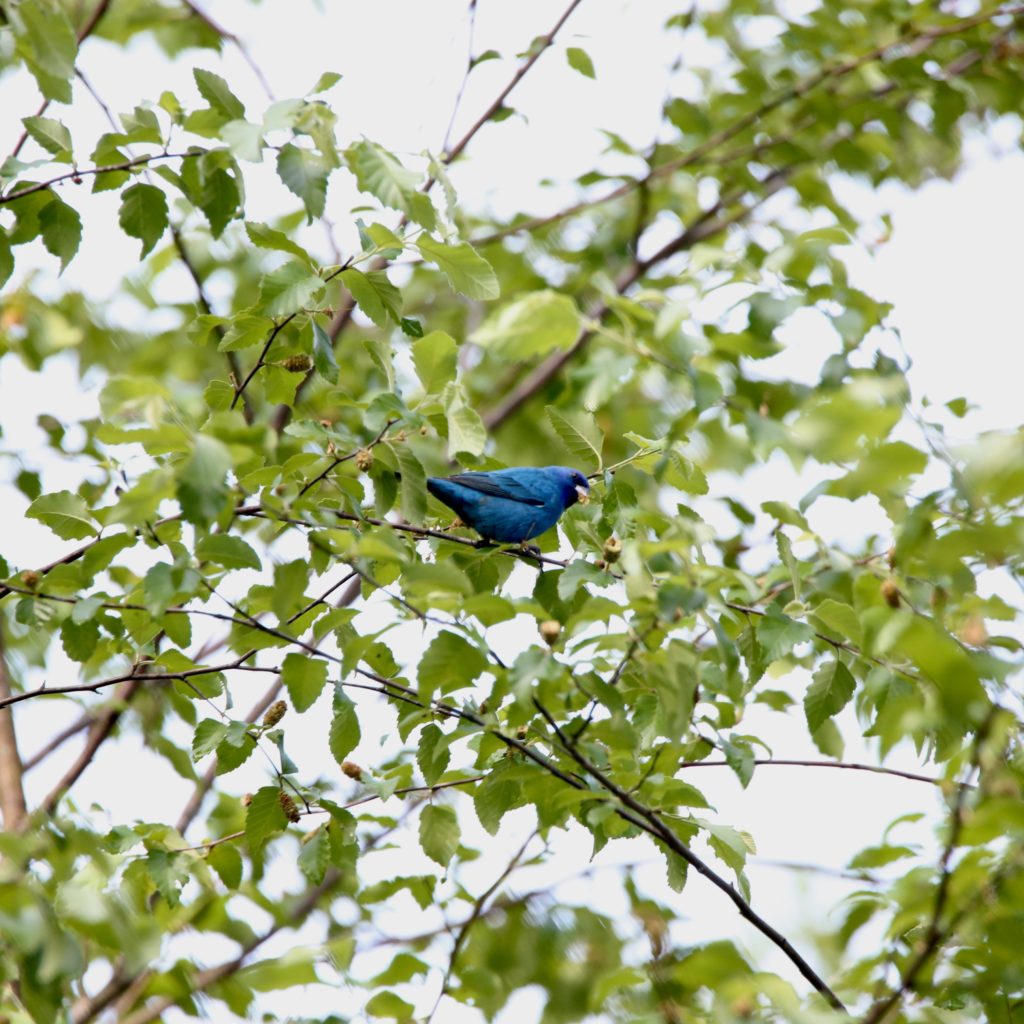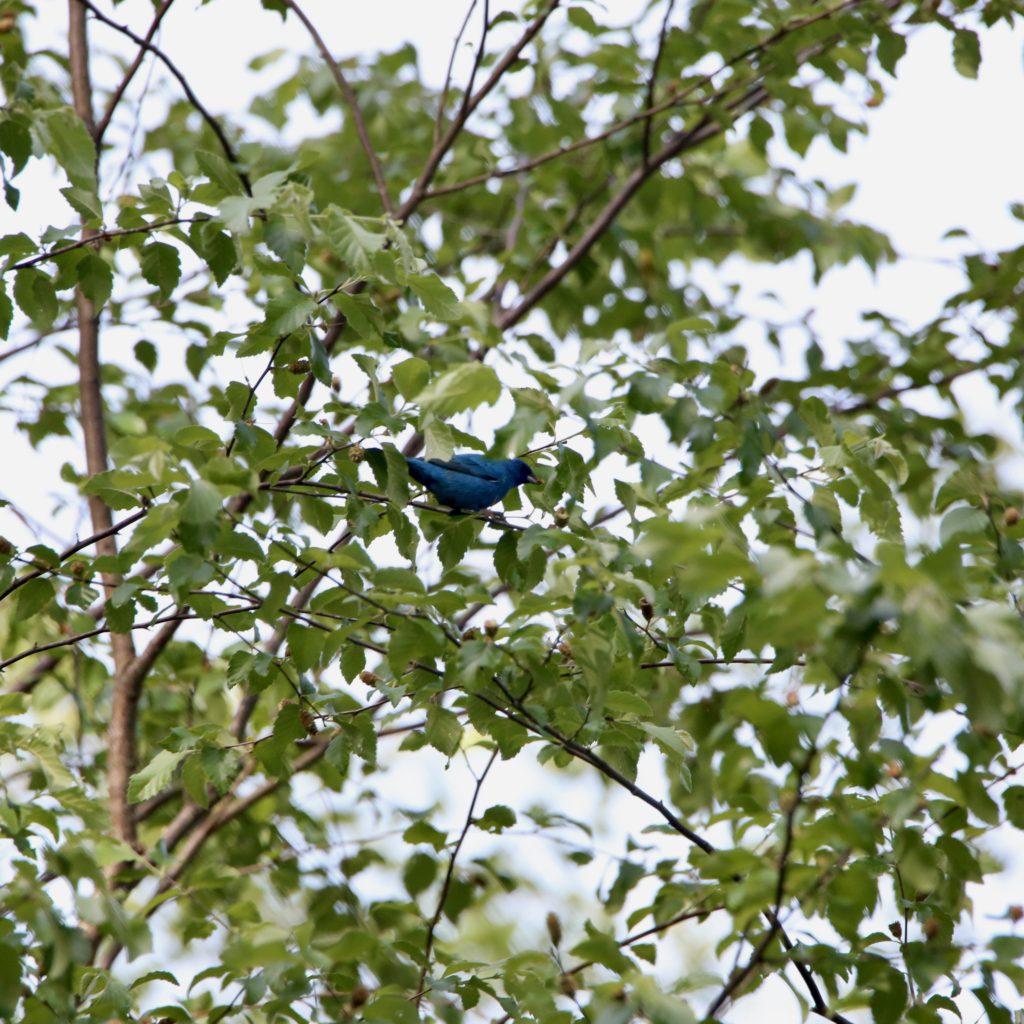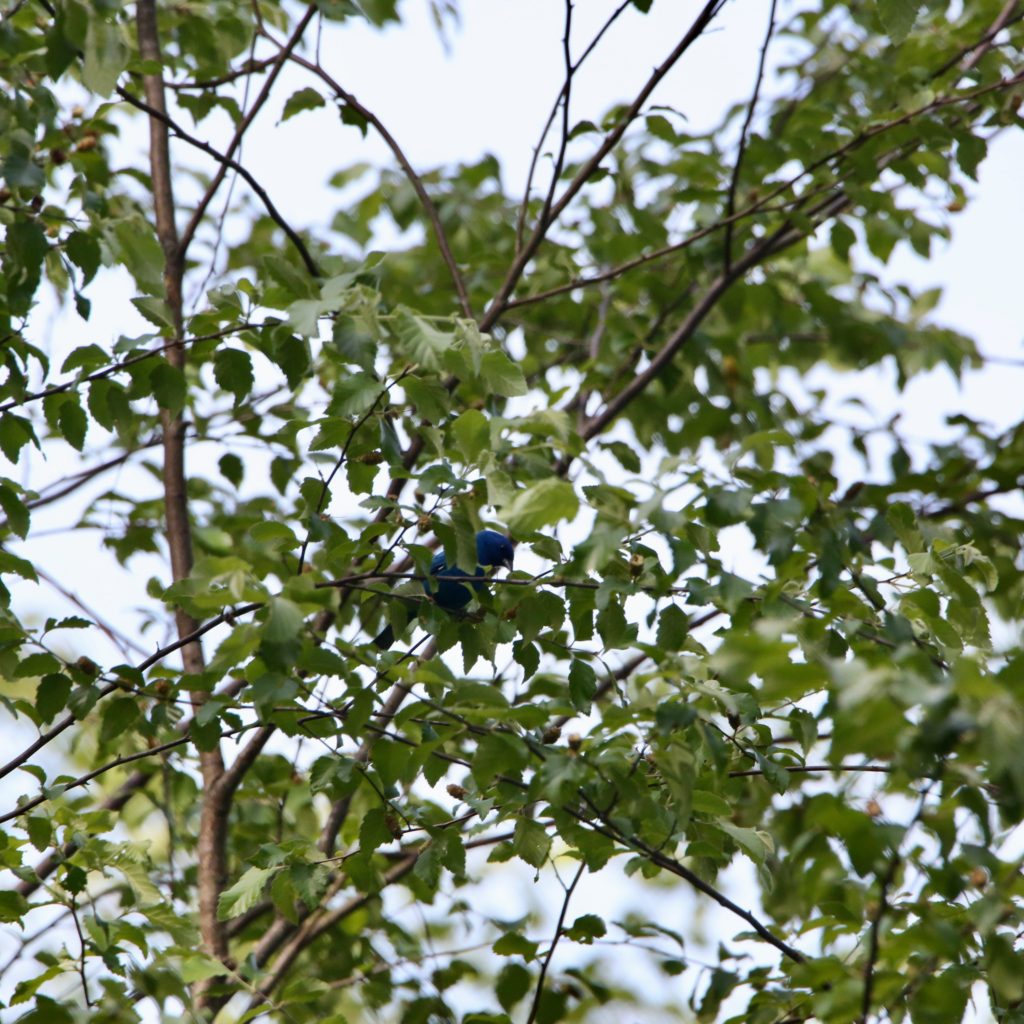
Indigo Bunting
A Indigo Bunting is a fun bird to see while bird watching. Below are some tips to help you identify Indigo Buntings. We have also put together a list of fun Indigo Bunting t-shirts, Indigo Bunting bird patches, bird houses, bird feeders, binoculars, stickers and other fun bird watching items.
About Indigo Buntings
The Indigo Bunting habitats well in brushy rural areas. It is a small bird belonging to the cardinal family. It is also a migratory bird ranging from southern Canada down to northern Florida especially during their breeding season. The species are of least concern and even though global population trends have not been quantified, there is no alarm that the birds are declining to warrant an upgrade on the conservation status
Description and Identification
Indigo Buntings are small songbirds, around the size of small sparrows. In the breeding season, adult buntings appear mostly a cerulean blue while their head is indigo and the wings and tail are black with cerulean edges. In fall and winter plumage, male buntings have brown edges to the blue body and head feathers. In comparison, female buntings are brown on the upperparts and lighter brown on the underparts. They have distinct wing bars and are fairly streaked with darker markings underneath. The juvenile birds resemble female buntings in colouring, whereas male buntings have hints of blue on the tails and shoulders and have darker streaks on the underside.
Indigo Bunting Color Pattern
The male Indigo Bunting has an indigo head while the rest of the body matches cerulean blue. It normally appears as a vibrant cerulean blue during the breeding season. The adult female looks totally different. She has brown on the upperparts and lighter brown on the underparts.
Indigo Bunting Size
The bird is a smallish songbird almost matching up to the size of a small sparrow. Its length is between 11-15cm long while it has a wingspan of about 20cm. The bird weighs an average of 14.5g which is small indeed.
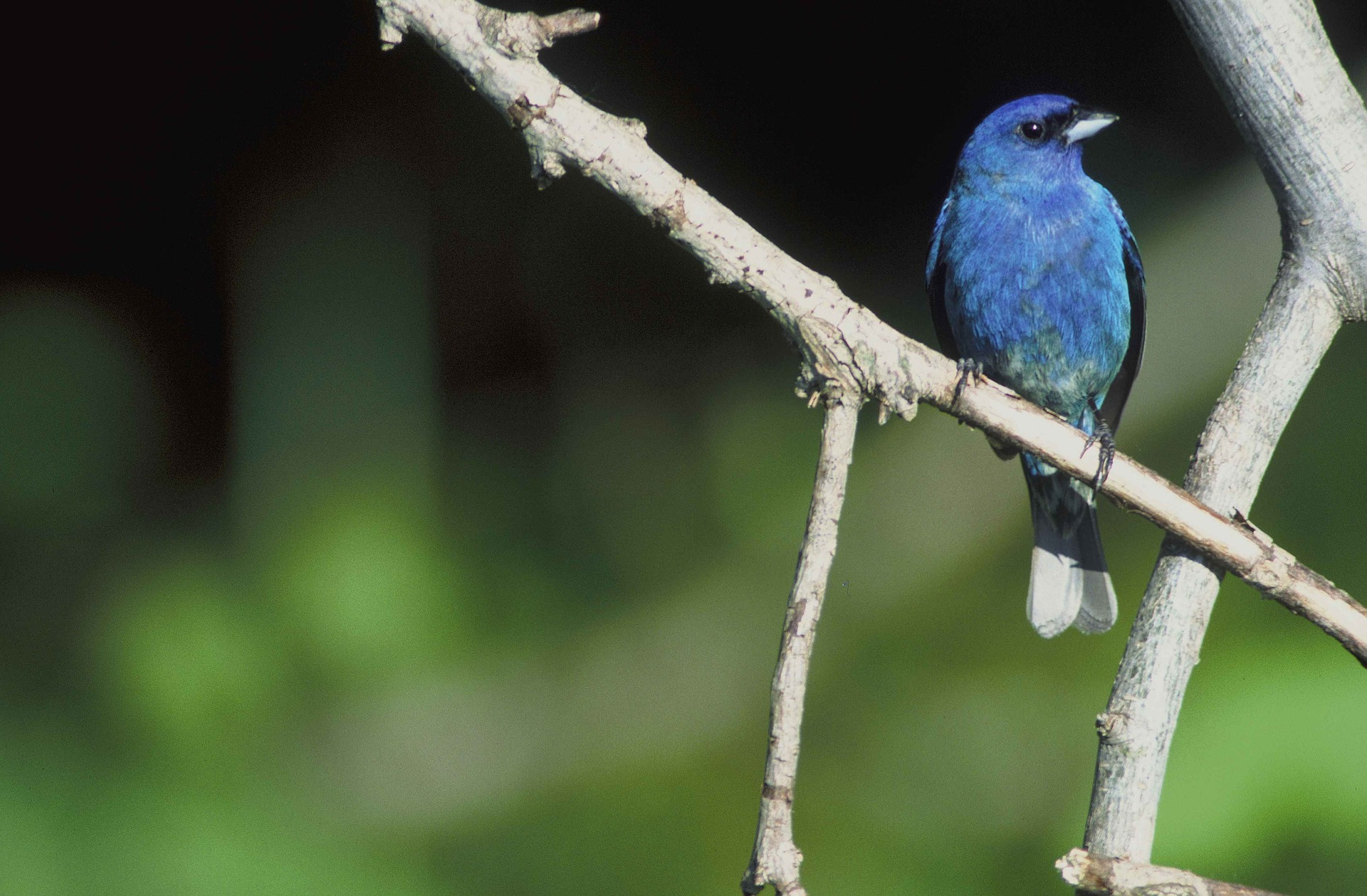
Indigo Bunting Behavior
The male Indigo Bunting sings with gusto, cheerfully and looks like the sky earning itself the nickname “blue canaries.” Their song is normally to mark off their territory from other males and attract female Indigo Buntings. The birds communicate with each other through vocalizations accompanied with some visual cues. Both sexes use a sharp chirp to call the other especially when the nest and their chicks are threatened.
What Indigo Bunting Eat and Their Food
Indigo Buntings mostly feed on small seeds, berries, buds, and insects. Common seed forage includes dandelions, thistles, goldenrods, and grains. During the summer months, spider and insect prey form the majority of their diet, and it may also include caterpillars, grasshoppers, aphids, cicadas, and beetles, like weevils, click beetles, and cankerworms. In the spring, the bunting feed on twigs, buds, and leave of trees, including cottonwood, oaks, aspen, beech, elm, maple, and hickory. The juveniles mostly feed on insects, at first, to provide them with protein. They don’t drink frequently and generally obtain sufficient water from their diet.
They mainly feed on seeds and insects. During their breeding season, they like to feed on insects and spiders and sometimes, some little fruit like berries. The Indigo Buntings young are fed with insects during summer then seeds in winter.
Where Indigo Buntings Live and Their Habitat
Indigo Buntings breed in brushy and weedy areas. They’re usually found on the edges of woods and fields, along roads, streams, rivers, and powerline cuts, in brushy canyons, logged forest plots, and abandoned fields where shrubby growth is returning. The buntings are also found in clearings within deciduous woods and edges of swamps. In the west, Indigo Buntings are spot usually near streams. During winter in the tropics, Indigo Buntings are the most common around brushy edges of farm fields. The winter range begins in southern Florida and central Mexico and stretches south through the West Indies and Central America to northern South America.
If you’re interested in bird watching, then look for the bird in bushy or weedy fields and shrubby areas near woody vegetation. When nesting they can be found on roadsides, old fields that are overgrown and sometimes at swamp edges.
Range and Migration

Indigo Buntings are from the cardinal family of Cardinalidae. The birds have occurred as vagrants in Antigua and Barbuda, Netherlands, Serbia, Denmark, Ecuador, Germany, Iceland, Ireland, Saint Pierre and Miquelon, and the United Kingdom. They are the most abundant in parts of the east. The birds are long-distance migrants, ranging from southern Canada to northern South America during the breeding season. During the winter, they migrate from southern Florida to northern South America. During migration, large flocks of Indigo Buntings are seen feeding in agricultural fields and on lawns.
Nesting
Indigo Buntings nest in fields and on the edges of woods, roadsides, and railroad rights-of-way. The female buntings choose a concealed nest site in low vegetation, within a meter of the ground. Occasionally, female buntings build their nest in crop plants, such as corn or soybeans. They make the nest alone, male buntings may watch, but they don’t help the females. The buntings are usually monogamous; however, they are not always faithful to their partner. Indigo Buntings may abandon their nest if a cowbird egg appears before laying any of their own eggs. The female buntings take care of the eggs alone.
Indigo Bunting Lifecycle
The female clutch 3-4 eggs per brooding season. The eggs incubate for 12-13 days before they hatch. Sometimes, they will incubate for 11-14 days. The young take 9-12 days after hatching to experience their first flight. The Indigo Bunting has a lifespan of 2 to 3 years especially for the majority of other types of birds in the cardinal family.
Ornithology
Bird Watching Academy & Camp Subscription Boxes
At Bird Watching Academy & Camp we help kids, youth, and adults get excited and involved in bird watching. We have several monthly subscription boxes that you can subscribe to. Our monthly subscription boxes help kids, youth, and adults learn about birds, bird watching, and bird conservation.
Bird Watching Binoculars for Identifying Indigo Buntings
The most common types of bird watching binoculars for viewing Indigo Buntings are 8×21 binoculars and 10×42 binoculars. Bird Watching Academy & Camp sells really nice 8×21 binoculars and 10×42 binoculars. You can view and purchase them here.
Indigo Bunting T-shirts
If you love the Indigo Bunting you should purchase a Bird Watching Academy & Camp T-shirt. To help support bird conservation we donate 10 percent to bird conservation activities.
Indigo Bunting Iron On Patches
Kids, Youth, and Adults love to collect our Bird Watching Academy & Camp iron on patches. Our bird watching patches help you keep track of the birds you have seen an identified. You can also display the patches on our Bird Watching Academy & Camp banners.
The Indigo Bunting is a great iron on patch to start your collection with. The patches are durable and can be sewn on or ironed on to just about anything.
Indigo Bunting Stickers
Stickers are a great way for you to display your love for bird watching and the Indigo Bunting. We sell a monthly subscription sticker pack. The sticker packs have 12 bird stickers. These sticker packs will help your kids learn new birds every month.
Bird Feeders For Indigo Bunting
There are many types of bird feeders. Here are our favorite bird feeders for your backyard. We use all of these bird feeders currently. Kids will have a great time watching birds eat at these bird feeders. Using this collection of bird feeders will provide a wide variety and many types of birds.
Best Bird Houses for Indigo Bunting
There are many types of bird houses. Building a bird house is always fun but can be frustrating. These 4 bird houses have become our favorites. Getting a bird house for kids to watch birds grow is always fun. We spent a little extra money on these bird houses but they have been worth the higher price and look great.


